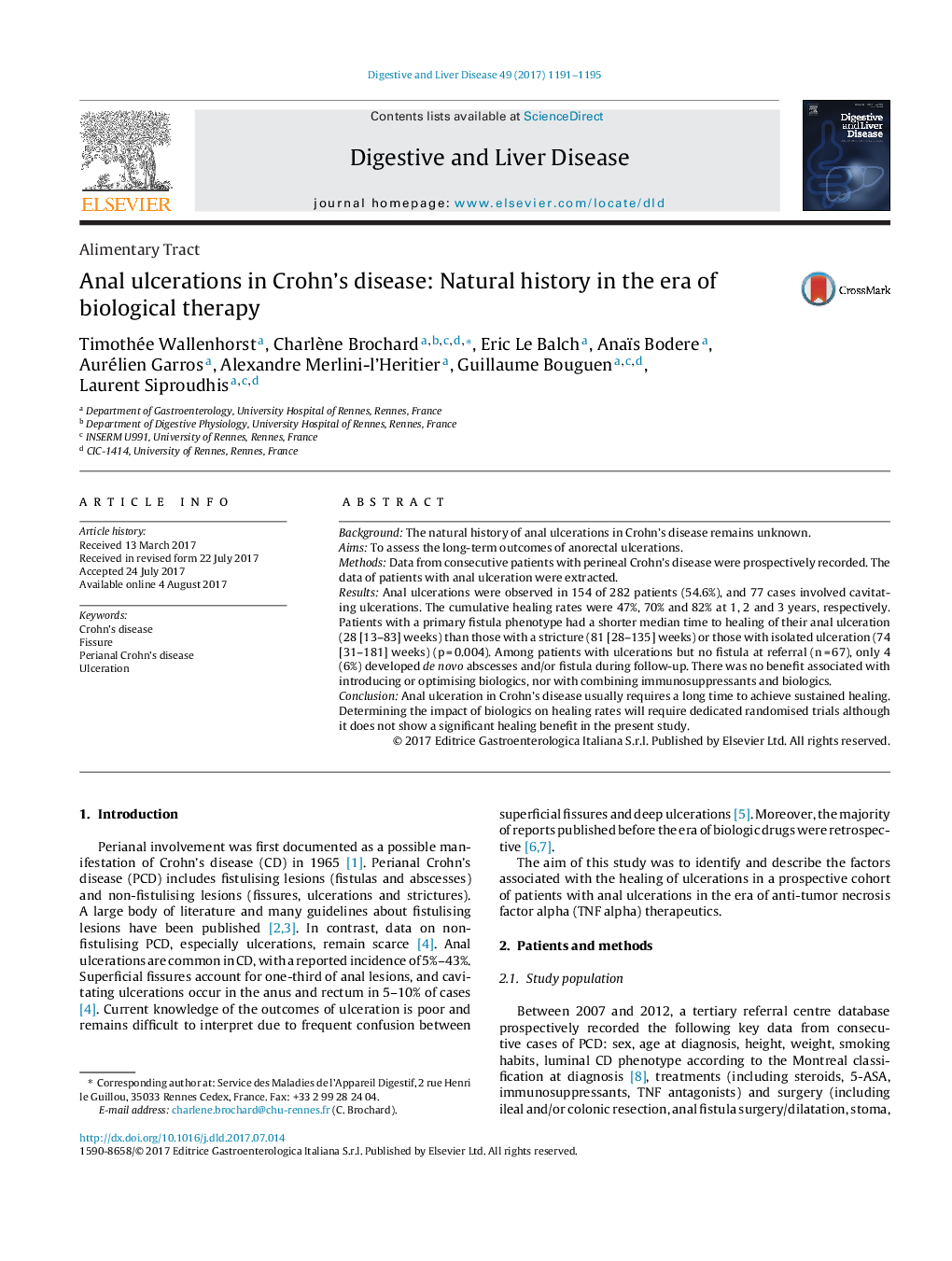| Article ID | Journal | Published Year | Pages | File Type |
|---|---|---|---|---|
| 5655241 | Digestive and Liver Disease | 2017 | 5 Pages |
BackgroundThe natural history of anal ulcerations in Crohn's disease remains unknown.AimsTo assess the long-term outcomes of anorectal ulcerations.MethodsData from consecutive patients with perineal Crohn's disease were prospectively recorded. The data of patients with anal ulceration were extracted.ResultsAnal ulcerations were observed in 154 of 282 patients (54.6%), and 77 cases involved cavitating ulcerations. The cumulative healing rates were 47%, 70% and 82% at 1, 2 and 3 years, respectively. Patients with a primary fistula phenotype had a shorter median time to healing of their anal ulceration (28 [13-83] weeks) than those with a stricture (81 [28-135] weeks) or those with isolated ulceration (74 [31-181] weeks) (p = 0.004). Among patients with ulcerations but no fistula at referral (n = 67), only 4 (6%) developed de novo abscesses and/or fistula during follow-up. There was no benefit associated with introducing or optimising biologics, nor with combining immunosuppressants and biologics.ConclusionAnal ulceration in Crohn's disease usually requires a long time to achieve sustained healing. Determining the impact of biologics on healing rates will require dedicated randomised trials although it does not show a significant healing benefit in the present study.
